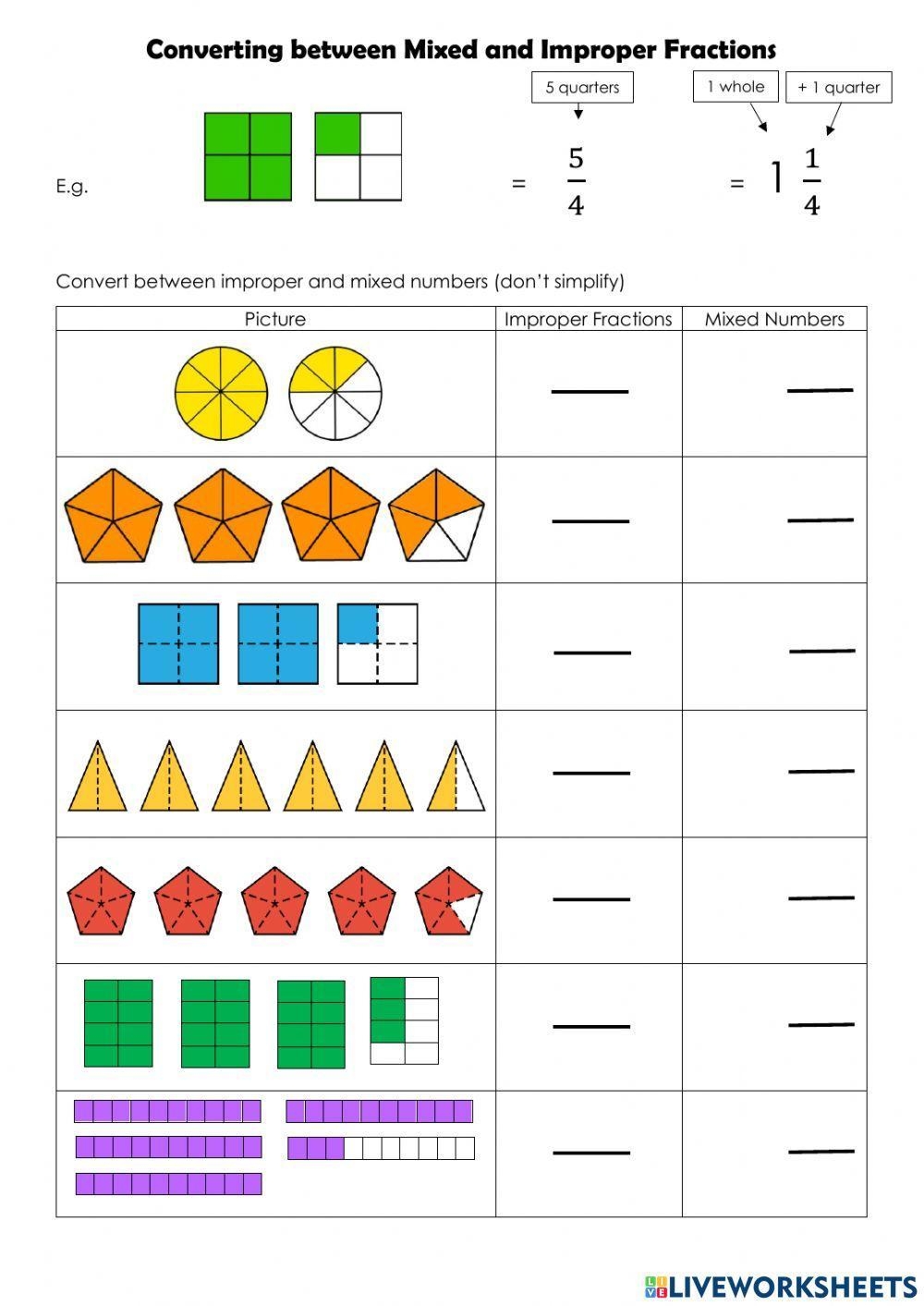Improper fractions are fractions where the numerator is greater than the denominator. On the other hand, mixed numbers consist of a whole number and a proper fraction. Converting improper fractions to mixed numbers is an important skill in mathematics that helps in simplifying and understanding fractions better.
One way to convert an improper fraction to a mixed number is by dividing the numerator by the denominator. The whole number part of the mixed number will be the result of the division, and the remainder will be the numerator of the proper fraction. The denominator remains the same in the proper fraction.
For example, if we have the improper fraction 7/3, we can divide 7 by 3 to get 2 with a remainder of 1. Therefore, the mixed number equivalent of 7/3 is 2 1/3.
Another method to convert improper fractions to mixed numbers is by using long division. This method is useful when the numerator is significantly larger than the denominator. By performing long division, we can easily determine the whole number and the proper fraction parts of the mixed number.
Practice worksheets on changing improper fractions to mixed numbers are essential for students to master this skill. These worksheets typically include a variety of improper fractions that students need to convert to mixed numbers. By solving these problems, students can reinforce their understanding of fractions and improve their problem-solving abilities.
It is important for students to practice converting improper fractions to mixed numbers regularly to build their confidence and proficiency in working with fractions. These skills are fundamental in higher-level math courses and are also applicable in real-life situations.
In conclusion, converting improper fractions to mixed numbers is a valuable skill that all students should learn. By using worksheets and practice problems, students can enhance their understanding of fractions and become more proficient in mathematical operations involving fractions.
